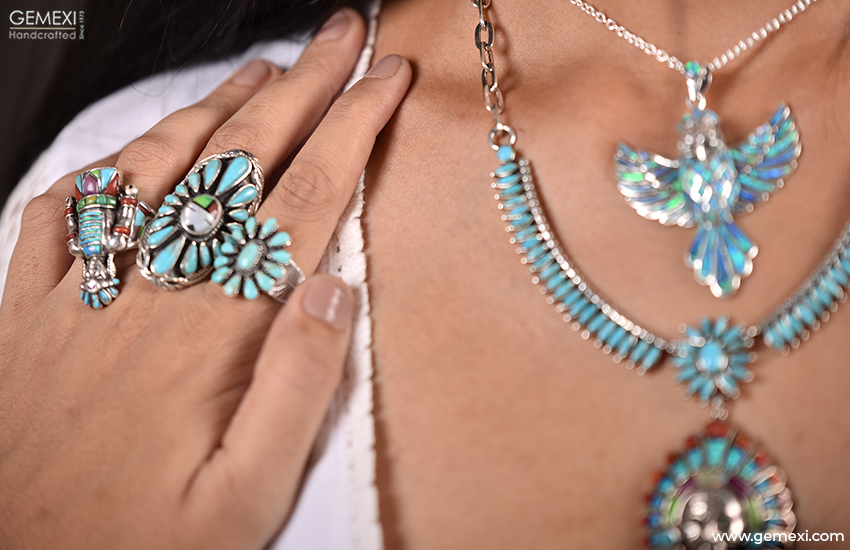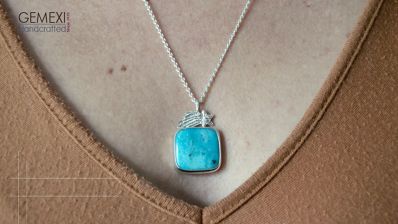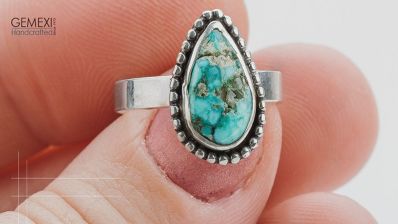The Beauty of Turquoise: A History of Elegance in Navajo Jewelry
By Gemexi Team | Turquoise- Updated On Jul 29, 2023

Turquoise, with its mesmerizing blue and green hues, has captivated hearts and minds for thousands of years. It is one of the oldest gemstones known to humanity, and its allure has transcended time and cultures. Among the many communities that have cherished turquoise, the Navajo people have held a deep reverence for this gemstone. In Navajo jewelry, turquoise is not just an adornment; it is a symbol of cultural identity, spirituality, and beauty. In this blog, we will take a closer look at the beauty of turquoise and its history of elegance in Navajo jewelry.
I. The Fascinating History of Turquoise:
- 1. Ancient Origins:
Turquoise has a rich history that dates back to ancient civilizations. It was first mined over 6,000 years ago in present-day Iran and was revered by the ancient Egyptians, Persians, and Native Americans. The stone was highly valued for its vibrant color and believed to possess protective and healing properties.
- 2. Cultural Significance:
In various cultures, turquoise held significant spiritual and cultural importance. Native American tribes, including the Navajo, believed turquoise to be a sacred stone, symbolizing water and the sky. It was used in ceremonies, adornments, and as a medium to communicate with the spirits.
II. Turquoise in Navajo Culture:
- 1. The Introduction of Turquoise:
Turquoise was introduced to the Navajo people by the Ancestral Puebloans (Anasazi) around 200 AD. The Ancestral Puebloans were skilled in turquoise mining and trading, and their influence greatly impacted the Navajo jewelry-making traditions.
- 2. Turquoise as a Symbol of Protection:
In Navajo culture, turquoise is associated with protection and spiritual well-being. It is believed to bring good fortune and shield the wearer from harm. Turquoise also plays a vital role in Navajo healing ceremonies and rituals.
- 3. The Rise of Navajo Jewelry:
The art of silversmithing was introduced to the Navajo people in the 19th century by the Spanish and Mexican settlers. The Navajo quickly embraced this craft and began incorporating turquoise into their jewelry designs, blending their traditional techniques with the new influences.
III. The Beauty of Navajo Turquoise Jewelry:
- 1. Traditional Designs:
Navajo turquoise jewelry is characterized by its intricate silverwork and bold use of turquoise. Traditional Navajo pieces, such as squash blossom necklaces, cuffs, rings, and concho belts, feature stunning turquoise stones set in elaborate silver bezels.
- 2. Silver and Turquoise Harmony:
In Navajo jewelry, silver serves as the perfect backdrop for the vibrant hues of turquoise. The combination of silver's metallic shine and turquoise's vivid color creates a harmonious contrast that is both striking and elegant.
- 3. Handcrafted Excellence:
Authentic Navajo turquoise jewelry is meticulously handcrafted by skilled artisans. The process involves shaping, cutting, and polishing the turquoise stones before setting them in carefully crafted silver settings. Each piece is a labor of love and reflects the artisan's skill and creativity.
IV. The Enduring Popularity of Navajo Turquoise Jewelry:
- 1. Revered by Collectors:
Navajo turquoise jewelry is highly sought after by collectors and enthusiasts worldwide. Antique pieces from the early 20th century are particularly prized, with their historical significance and artistry making them valuable treasures.


- 2. Modern Interpretations:
Contemporary Navajo artisans continue to honor the tradition of turquoise jewelry-making while introducing modern elements and design innovations. These modern interpretations appeal to a broader audience while keeping the essence of Navajo turquoise jewelry intact.
V. Caring for Navajo Turquoise Jewelry:
- 1. Gentle Care:
Navajo turquoise jewelry should be handled with care to preserve its beauty. Avoid exposing the jewelry to harsh chemicals, excessive sunlight, and water.
- 2. Storing Properly:
When not wearing your Navajo turquoise jewelry, store it in a cool, dry place away from direct sunlight. Wrapping the jewelry in a soft cloth or a jewelry pouch can help prevent scratching.
The beauty of turquoise in Navajo jewelry is a testament to the enduring elegance of this mesmerizing gemstone. Its history, cultural significance, and artistic appeal have made Navajo turquoise jewelry a cherished art form that continues to captivate hearts and stand the test of time. As we admire these exquisite pieces, let us not only appreciate the beauty of turquoise but also honor the cultural heritage and craftsmanship of the Navajo people who have preserved and enriched this timeless tradition.
The beauty of turquoise in Navajo jewelry is a testament to the enduring elegance of this mesmerizing gemstone. Its history, cultural significance, and artistic appeal have made Navajo turquoise jewelry a cherished art form that continues to captivate hearts and stand the test of time. As we admire these exquisite pieces, let us not only appreciate the beauty of turquoise but also honor the cultural heritage and craftsmanship of the Navajo people who have preserved and enriched this timeless tradition.










0 Comments
Write Comments